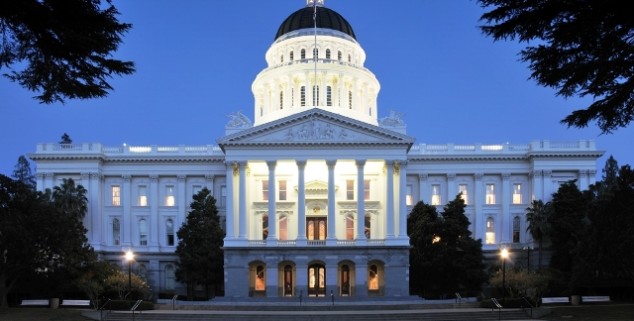Recent News
State budget fuels major new construction
 The state Capitol in Sacramento, viewed from 10th Street toward the West Steps.(Photo: Timothy Boomer)
The state Capitol in Sacramento, viewed from 10th Street toward the West Steps.(Photo: Timothy Boomer)On deadline, lawmakers are poised to act on the most extensive state building construction projects in Sacramento in decades.
The $1.3 billion plan, about $200 million less than proposed earlier by Gov. Brown as part of his 2016-17 budget, was placed in legislation Monday before the Senate budget committee, where it awaits action.
The panel is considering more than two dozen budget-linked bills, the so-called “trailer bills” that accompany the main budget bill and contain the changes in law – and the political deals – that put the budget into effect.
The six-floor state Capitol annex, which contains a warren of offices attached to the restored, older structure of the Capitol, was completed in 1952.
The construction project is tucked into AB 1608, a sprawling, 232-page piece of legislation that contains numerous unrelated programs – including optometry, school construction, charitable campaigns, fiscal management, medical care, safety inspections, mine licensing, and numerous others.
The priority projects are the iconic Resource building on 9th Street between N and 0, about a block from the Capitol; and the Bonderson building at 9th and P Streets, followed by the restoration or reconstruction of the 64-year-old Capitol annex and, possibly, the Bateson building at 1600 9th Street.
The Department of General Services, the state’s business manager, has done preliminary studies on the projects and the Resources building likely would be handled first, said DGS spokesman Brian Ferguson. State officials say cramped space, safety and efficiency issues and the need to modernize old structures is driving the construction plans.
“A study of state office buildings documented serious deficiencies with existing buildings that will require renovation or replacement, including inadequate fire life and safety systems,” the DGS reported in an earlier study, which also has authority over state office space.
Central Sacramento is a bureaucratic hive, with hundreds of thousands of square feet in office space, most of it for state government, although there also are local and federal government offices, as well.
The major, top-priority projects are:
–A new 650,000 square-foot-office building to house the tenants currently working in the Resources and Bonderson buildings. The site for the new building hasn’t been decided, but the goal is to place it downtown, or close to it.
The 17-floor Resources building, which houses the Resources Agency, the Department of Water Resources, the Forestry and Fire Protection Department and numerous related government offices, was built in 1964. The Bonderson building, completed in 1983 and named after veteran state water expert Paul K. Bonderson, is in need of at least $10 million in repairs, according to one study. The Resources and Bonderson buildings ranked in the Top 5 of the buildings found to be in poor condition by the downtown office infrastructure study financed through the 2014-15 budget.
–The six-floor state Capitol annex, which contains a warren of offices attached to the restored, older structure of the Capitol, was completed in 1952. The renovation/reconstruction plan offers at least two options, the state said.
One is the construction of a “swing space” building on the south side of the Legislative Office Building at 10th and N Streets, which currently is a parking lot, to house the tenants of the Capitol Annex while the annex is being renovated. The second option is to construction a new office building in Capitol Park to house all the existing tenants of the annex. Under this option, the new building “would be connected to the original Capitol via an underground tunnel and, once completed, (the state would) demolish the annex and reconstruct the east façade of the historic Capitol building.”
The existing annex is “undersized to meet current demands and is antiquated,” with “systems that are prone to failure and expensive to maintain,” the state said. “The state Capitol is visited by millions of people each year and this important government building requires significant modernization to continue to serve the state in the future.”
By law, the main budget bill must be approved by the Legislature and sent to the governor by June 15 — Wednesday — and the governor has two weeks to sign the budget into law. The new fiscal year begins July 1.
The trailer bills typically are approved in tandem with the budget, although governors often avoid signing the main budget bill until all the trailers are approved.
—
Ed’s Note: Contains details reported in an earlier story.
Want to see more stories like this? Sign up for The Roundup, the free daily newsletter about California politics from the editors of Capitol Weekly. Stay up to date on the news you need to know.
Sign up below, then look for a confirmation email in your inbox.

Leave a Reply